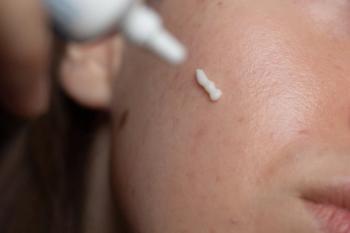
The Psychosocial Toll of Atopic Dermatitis Across All Ages
Key Takeaways
- Atopic dermatitis (AD) affects quality of life, causing sleep disturbances, emotional stress, and social challenges in both children and adults.
- Children with AD face behavioral issues and ADHD, impacting family dynamics and parental mental health.
At RAD 2025, Mona Shahriari, MD, emphasized the cumulative life course impairment of AD in pediatric and adult patients, highlighting its impact on sleep, mental health, family well-being, and quality of life.
“Let’s say you have a pebble in your shoe, it may be annoying, but you can probably live your whole life with that pebble in your shoe. But what if I removed it? Then maybe you become a marathon runner. We just don’t know what untapped potential you have, that you cannot achieve, because of the chronic uncontrolled inflammation of your AD,” said Mona Shahriari, MD, in a session at the
Shahriari, associate clinical professor of dermatology at Yale University, co-founder of Central Connecticut Dermatology, and a Dermatology Times Editorial Advisory Board member, provided an in-depth discussion on the psychosocial burden of atopic dermatitis (AD), with a special guest feature of one of her patients at RAD.1
Pediatric and Adult AD
One of the key focuses of Shahriari’s session was addressing AD in various special populations. Sleep disturbance, a common outcome with AD, significantly impacts numerous facets of personal life across age ranges. In children, sleep disturbances due to itching result in impaired quality of life (QoL), behavioral problems that encompass emotional stress and are associated with ADHD, and there is often an association with shorter stature related to size. Additionally, AD in young children can prominently affect families with impaired sleep for the parents and siblings, impair QoL of the parents, parental anxiety, and maternal depression.
In adults, AD also significantly impacts QoL; there are typically increased numbers of sick days and doctors' visits, which may affect work, difficulty with instrumental activities of daily living, and an overall negative effect on mental health and social functioning.
When considering children and adolescents with AD as a special population, Shahriari also pointed out that AD is often associated with learning disabilities, specifically a higher risk of ADHD. Social interactions are also often affected, with stressful peer-to-peer relationships and even the well-being of parents.2
Shahriari reviewed a survey of chronic childhood disorders in which AD ranked second only to cerebral palsy, with respect to impairment of QoL measures. As noted from Shahriari and the survey, “raising a child with AD can have equal or greater impact on the family as raising a child with diabetes.”3
Regarding both pediatric and adult AD, Shahriari surveyed the crowd on how many attendees were familiar with cumulative life course impairment (CLCI), to which some attendees were not familiar. CLCI is related to the continuous physical, emotional, psychological, and social burdens of AD that can accumulate over time.
Patient Advocacy
In a special feature of the session, Shahriari brought one of her patients on stage to discuss her lifelong AD diagnosis. Her AD journey began as a baby when AD appeared on her face. Despite her parents’ concern, her doctor at the time dismissed their concerns.
As the patient grew up, her AD moved to cover her arms, knees, and legs. She noted that a child, it’s difficult to be around others and always itching. She noted that growing up, she didn't necessarily feel socially isolated at the time, however, she did prefer to be alone to avoid seeming “gross” to her peers.
The patient’s AD progressively worsened in her teenage years, with the itching and burning spreading to her feet. This caused her to aggressively rub the bottom of her feet on rugs and carpets to attempt to alleviate the itching.
Eventually, her AD subsided during pregnancy and returned after. Shahriari attributed this to the shift in TH1 and TH2 in pregnancy, which can often worsen AD symptoms for some or clear them for others. For the patient, her overall experience with other primary care providers and dermatologists was that they did not understand the extent of her impacted QoL.
When seeing Shahriari, the patient began dupilumab (Dupixent: Sanofi, Regeneron) and eventually achieved “complete control of her life.” In a final message to clinicians, the patient urged them to take the extra 10 minutes to truly talk to their patients and understand their disease. The patient attributed Shahriari’s extra time and attention to her success in AD clearance.
References
1. Shahriari M. The psychosocial burden of AD. Presented at: 2025 Revolutionizing Atopic Dermatitis; June 6-7, 2025; Nashville, TN.
2. Nicholas MN, Keown-Stoneman CDG, Maguire JL, Drucker AM. Association between atopic dermatitis and height, body mass index, and weight in children. JAMA Dermatol. 2022 Jan 1;158(1):26-32. doi: 10.1001/jamadermatol.2021.4529.
3. Su JC, Kemp AS, Varigos GA, Nolan TM. Atopic eczema: its impact on the family and financial cost. Arch Dis Child. 1997 Feb;76(2):159-62. doi: 10.1136/adc.76.2.159.
Newsletter
Like what you’re reading? Subscribe to Dermatology Times for weekly updates on therapies, innovations, and real-world practice tips.


















